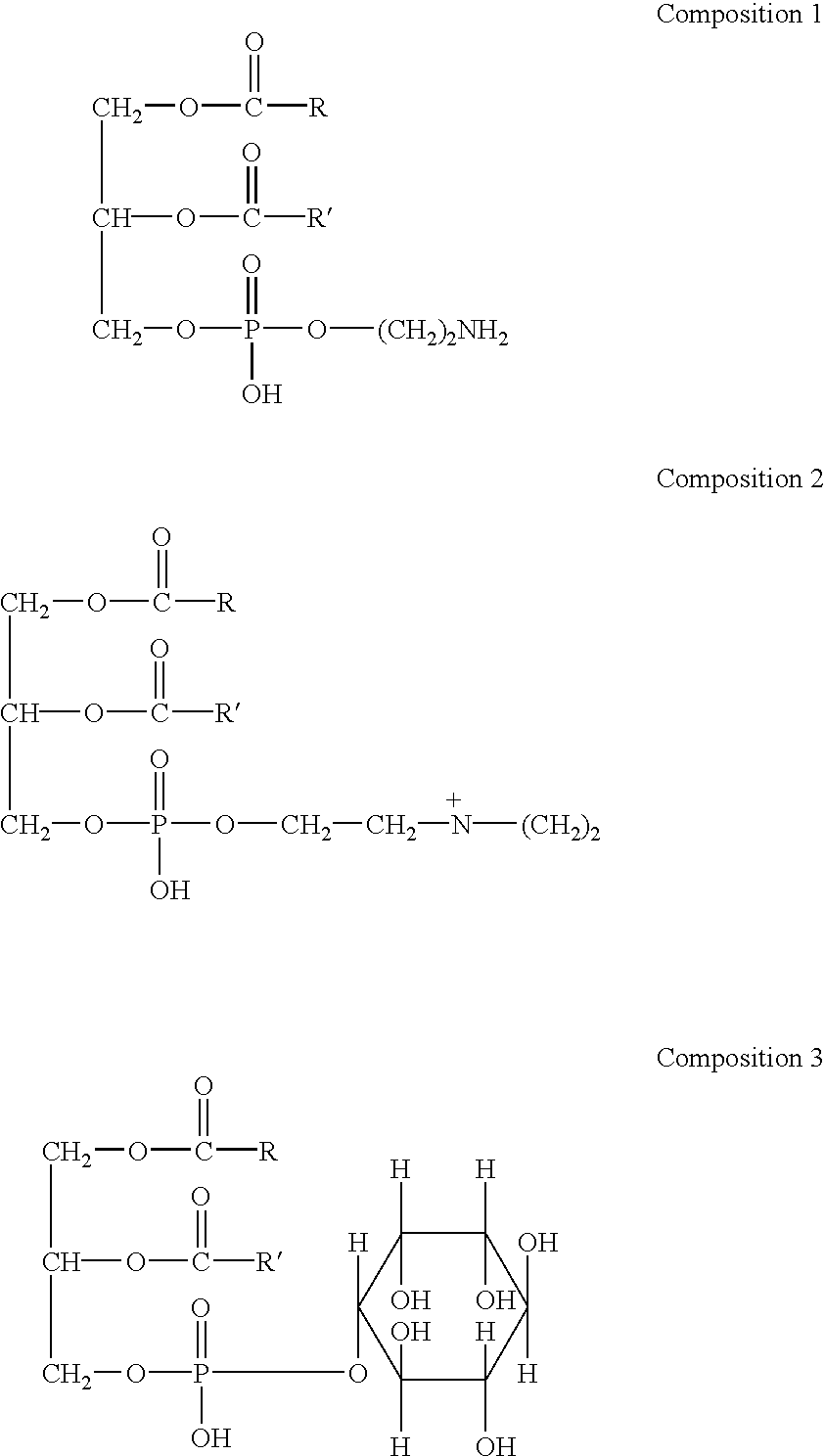Rumen by-pass delivery system
a delivery system and bypass technology, applied in the field of rumen bypass delivery system, can solve the problems of ineffective utilization, decomposition of substances, and inability to effectively utilize substances, and achieve the effects of efficient mastication, efficient mastication, and efficient absorption
- Summary
- Abstract
- Description
- Claims
- Application Information
AI Technical Summary
Benefits of technology
Problems solved by technology
Method used
Image
Examples
example 2
[0063] In order to determine the effects of aged CML, a matrix similar to that of Example 1 was prepared, except that the bleached CML was 15 months old. All conditions and processes such as the initial sample weight, ratio of lecithin to lysine, and incubation period were the same as Example 1. The percentages of the bleached lecithin / lysine matrix not digested after 30 hours were: 21.39%, 26.82%, 33.78%, 17.05%, and averaged 24.68%.
example 3
[0064] An amount of CML / lysine matrices of Examples 1 and 2 were tested further in the artificial rumen fermenter except that the 0.25 gram samples were crumbed instead of being in larger pieces. The percentages of CML / lysine matrix of Example 1 not digested after 12 hours were: 59.66%, 41.01%, 51.70% and averaged 50.79%. The percentages of CML / lysine matrix of Example 2 not digested after 12 hours were: 17.94%, 20.19%, 14.13% and averaged 17.42%. The rumen protection afforded by the matrix described herein is a function of the surface area exposed to the rumen fluid.
example 4
[0065] Calcium modified lecithin (CML) was made as in Example 1, except that 10 grams of 80% calcium chloride and 130 mL of ethyl alcohol were mixed at 70.degree. C. with constant stirring until the CaCl.sub.2 was dissolved. Acetone in the amount of 440 mL was added and the solution was cooled. 800 grams of bleached lecithin (ADM Ultralec F) was stirred into the solution, and the resultant mixture was dried. The CaCl2 used in this process represented 1.25% by weight of the total final composition. The calcium complexed lecithin thus described, was used to produce a rumen protected matrix that contained the amino acid lysine. The matrix was made by mixing an amount of CML equal to between 50% and 75% by weight of the total composition with an amount of lysine equal to between 25% and 50% by weight of the total composition. Ten grams of this mixture was compressed as in Example 1 and the resultant lecithin / lysine matrix was crumbed as in Example 3.
[0066] The rumen protection afforded ...
PUM
 Login to View More
Login to View More Abstract
Description
Claims
Application Information
 Login to View More
Login to View More - R&D
- Intellectual Property
- Life Sciences
- Materials
- Tech Scout
- Unparalleled Data Quality
- Higher Quality Content
- 60% Fewer Hallucinations
Browse by: Latest US Patents, China's latest patents, Technical Efficacy Thesaurus, Application Domain, Technology Topic, Popular Technical Reports.
© 2025 PatSnap. All rights reserved.Legal|Privacy policy|Modern Slavery Act Transparency Statement|Sitemap|About US| Contact US: help@patsnap.com

